- Why Removing Fallen Leaves is Important
- 1. Prevents Lawn Damage
- 2. Reduces Pest Infestations
- 3. Improves Air Circulation
- 4. Prevents Clogging of Drains and Gutters
- 5. Enhances Aesthetics
- Conclusion
- The Benefits of Removing Fallen Leaves
- Promotes Lawn Health
- Prevents Pest and Weed Issues
- Improves Aesthetic Appeal
- Prevents Lawn Damage
- Easy Leaf Disposal
- The Impact of Fallen Leaves on Lawns and Gardens
- Negative Impacts
- Positive Impacts
- The Connection Between Fallen Leaves and Pest Control
- 1. Shelter and Winter Protection
- 2. Organic Matter and Soil Health
- 3. Biochemical Defense Mechanism
- 4. Habitat for Birds and Bats
- 5. Moisture Regulation
- How Fallen Leaves Can be Useful
- 1. Composting
- 2. Mulching
- 3. Insulation
- 4. Wildlife Habitat
- 5. Leaf Mold
- Using Fallen Leaves as Mulch
- 1. Shred the leaves:
- 2. Apply a layer of leaves:
- 3. Combine leaves with other organic materials:
- 4. Leave some space around the plant stem:
- 5. Renew the mulch annually:
- Composting Fallen Leaves
- Why Compost Fallen Leaves?
- How to Compost Fallen Leaves
- Transforming Fallen Leaves into Natural Fertilizer
- Composting Methods for Fallen Leaves:
- Benefits of Using Fallen Leaf Compost:
- Using Fallen Leaves for Crafts and Decorations
- Leaf Prints
- Leaf Garlands
- Leaf Wreaths
- Leaf Lanterns
- Leaf Table Runner
- Leaf Coasters
- Question-answer:
- Why is it important to remove fallen leaves?
- What can happen if fallen leaves are not removed?
- How often should fallen leaves be removed?
- Can fallen leaves be beneficial in any way?
- What is the best way to remove fallen leaves?
- Are there any alternatives to removing fallen leaves?
- Video: What can I do with my fallen leaves? | Ask BrightView
Fallen leaves provide a beautiful scene during the autumn season with their vibrant colors. However, as the season progresses, it becomes necessary to remove these fallen leaves from our lawns and gardens. This is important for a number of reasons, including maintaining the health of our plants and preventing potential hazards.
One of the main reasons why removing fallen leaves is important is to prevent the spread of diseases and pests. Leaves can harbor harmful fungal diseases and insects that can infect our plants. When left on the ground, these diseases and pests can easily spread and cause significant damage to our gardens. By removing the fallen leaves, we can reduce the risk of these issues and help keep our plants healthy.
In addition to preventing diseases and pests, removing fallen leaves also allows for better air circulation and sunlight exposure for our plants. When leaves cover the ground, they can block sunlight from reaching the lower parts of our plants, hindering their growth and development. By removing the leaves, we can ensure that our plants receive the necessary light and air circulation they need to thrive.
However, it’s important to note that fallen leaves are not entirely useless. They can be transformed into valuable organic matter through composting. Composting is the process of breaking down organic material to create nutrient-rich soil. By collecting and composting fallen leaves, we can create our own natural fertilizer that can be used to enrich our gardens and promote healthy plant growth.
In conclusion, while fallen leaves may provide a picturesque scenery, it is important to remove them from our lawns and gardens for the health and well-being of our plants. By doing so, we can prevent the spread of diseases and pests, allow for better air circulation and sunlight exposure, and even create our own organic fertilizer through composting.
Why Removing Fallen Leaves is Important
Removing fallen leaves from your yard and garden is an important task that should not be overlooked. While it may seem like a hassle, there are several reasons why removing fallen leaves is beneficial for your plants, the environment, and overall yard health.
1. Prevents Lawn Damage
Fallen leaves can create a layer of insulation on your lawn, preventing sunlight and moisture from reaching the grass. This can result in the development of fungi and increase the risk of diseases, ultimately damaging your lawn. By removing leaves, you allow your grass to breathe and absorb the necessary nutrients.
2. Reduces Pest Infestations
Unraked leaves create a warm and moist environment that attracts pests, such as insects and rodents. These pests can cause damage to your plants, flowers, and even your home. Removing fallen leaves helps eliminate their hiding places and reduces the risk of infestations, minimizing the need for chemical pest control.
3. Improves Air Circulation
Leaves that accumulate in gardens and flower beds can block air circulation and trap moisture, leading to the development of mold and mildew. This can be harmful to your plants and flowers, inhibiting their growth and potentially causing diseases. By removing fallen leaves, you promote better air circulation, reducing the risk of plant-related issues.
4. Prevents Clogging of Drains and Gutters
When leaves accumulate in your gutters and drains, they can clog the flow of water, leading to water damage and potential flooding. By removing fallen leaves from your yard, you help prevent clogged gutters and drains, ensuring proper water drainage and minimizing the risk of water-related issues.
5. Enhances Aesthetics
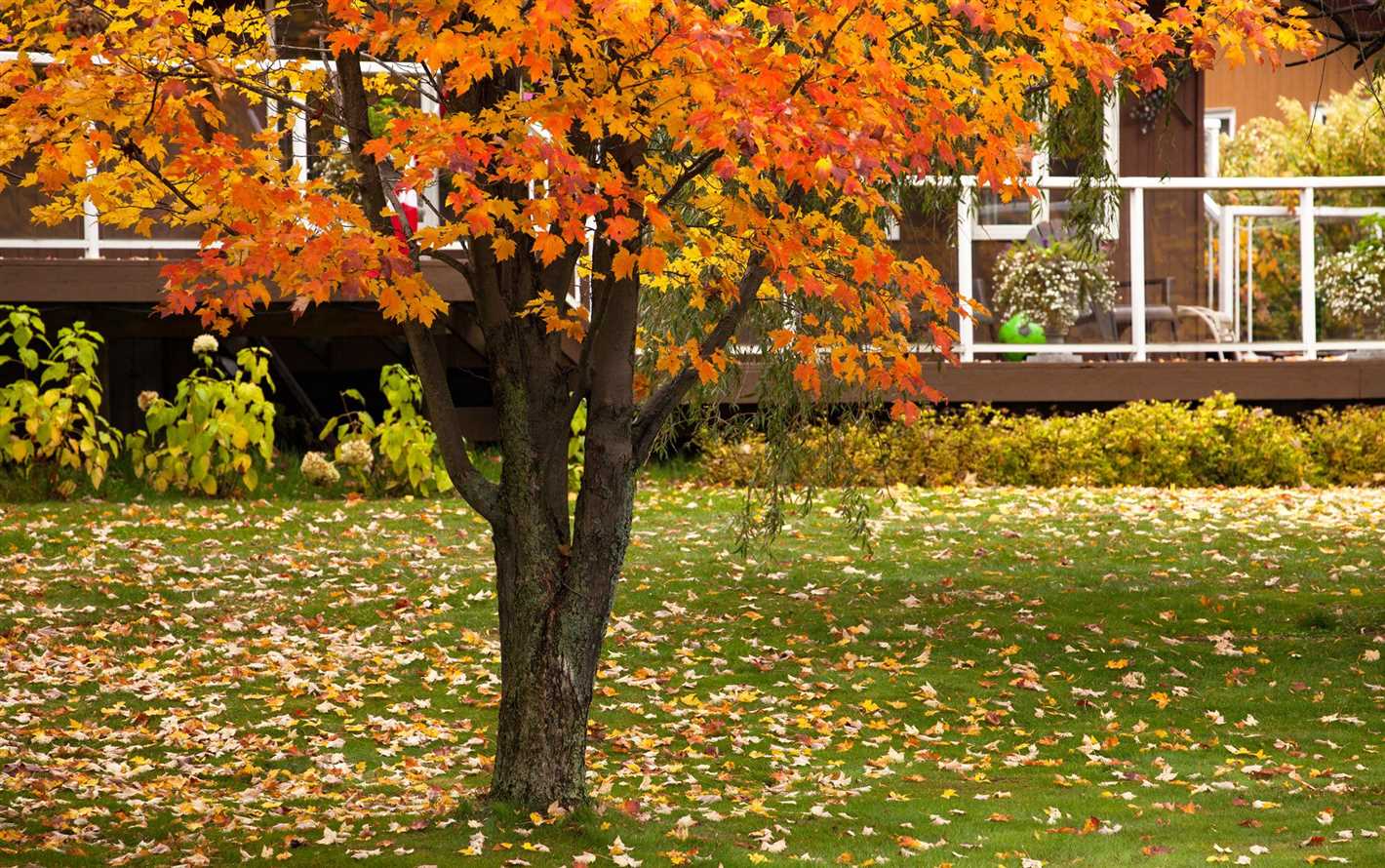
A yard covered in fallen leaves can appear messy and unkempt. By regularly removing leaves, you improve the overall aesthetics of your yard, making it more appealing and inviting. This is especially important if you plan to host outdoor gatherings or want to maintain a well-manicured property.
Conclusion
Removing fallen leaves is a crucial task that has numerous benefits. It helps prevent lawn damage, reduces pest infestations, improves air circulation, prevents clogging of drains and gutters, and enhances the overall aesthetics of your yard. By making leaf removal a part of your regular yard maintenance routine, you can ensure a healthy and beautiful outdoor space.
The Benefits of Removing Fallen Leaves
Promotes Lawn Health
One of the main benefits of removing fallen leaves from your lawn is that it promotes its overall health. When leaves accumulate on the grass, they block sunlight and trap moisture, creating an ideal environment for mold, moss, and other fungi to grow. These organisms can then compete with the grass for nutrients and water, leading to thinning and damage. By removing the leaves, you allow the grass to receive proper sunlight, air circulation, and access to water, which helps it to grow healthy and lush.
Prevents Pest and Weed Issues
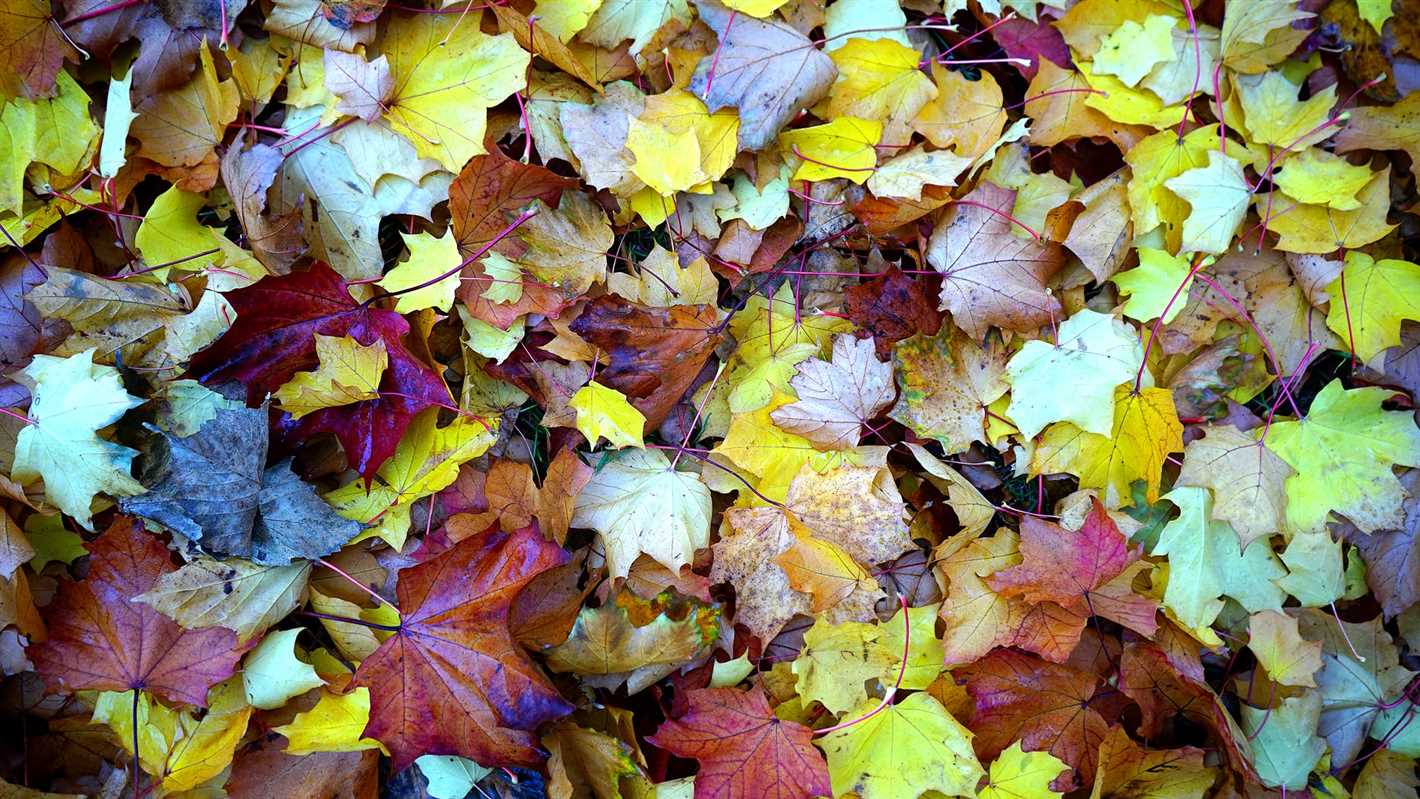
Fallen leaves can also create a favorable environment for pests and weeds to thrive. As the leaves decompose, they release organic matter that attracts insects and pests. Moreover, leaves provide a layer of insulation that can protect weeds, allowing them to establish themselves and spread across your lawn. By removing the fallen leaves, you reduce the likelihood of pest infestations and weed growth, helping to maintain a clean and pest-free lawn.
Improves Aesthetic Appeal
A well-maintained lawn adds beauty and curb appeal to any property. The presence of a thick layer of fallen leaves can make your lawn appear messy and unkempt. By regularly removing the leaves, you can enhance the overall aesthetic appeal of your lawn, making it look tidy and well-cared for. This not only creates a better first impression for visitors and passersby but can also increase the value of your property.
Prevents Lawn Damage
Leaves that are left on the lawn for an extended period can suffocate the grass underneath, leading to patches of dead or dying grass. Additionally, wet leaves can become compacted, creating a barrier that prevents air and water from reaching the soil. Over time, this can cause the grass to weaken and die. By promptly removing fallen leaves, you can prevent this damage and maintain the health and longevity of your lawn.
Easy Leaf Disposal
Removing fallen leaves also provides an opportunity for easy leaf disposal. Once the leaves are gathered, they can be composted, recycled, or used as mulch in gardens and flower beds. By responsibly disposing of the leaves, you not only prevent them from piling up and creating a mess but also contribute to sustainable gardening practices.
In conclusion, removing fallen leaves from your lawn offers numerous benefits. From promoting lawn health to preventing pest and weed issues, removing leaves helps to maintain a clean, healthy, and aesthetically pleasing lawn. Additionally, it prevents lawn damage and provides a convenient way to dispose of the leaves. By incorporating regular leaf removal into your lawn care routine, you can ensure the long-term health and beauty of your lawn.
The Impact of Fallen Leaves on Lawns and Gardens
Fallen leaves can have both positive and negative impacts on lawns and gardens. While they may create a picturesque scene during the fall season, they can also pose challenges to the health and maintenance of your outdoor space.
Negative Impacts
- Blocking sunlight: When fallen leaves cover your lawn or garden, they can block sunlight from reaching the grass, flowers, and other plants below. Lack of sunlight can hinder photosynthesis and affect the growth and overall health of your vegetation.
- Suffocating the soil: A thick layer of fallen leaves can trap moisture and prevent air circulation, leading to a suffocated soil environment. This can result in root rot, fungal diseases, and overall poor soil health.
- Promoting weed growth: Fallen leaves can provide a moist and shaded environment that favors the growth of weeds. A layer of leaves acting as mulch can contribute to the proliferation of unwanted plants, which can compete with your desired vegetation for resources.
- Attracting pests and diseases: Fallen leaves can attract pests, such as insects and rodents, that may find shelter or food among the decaying organic matter. Additionally, wet leaves can harbor fungal diseases that can harm your plants.
Positive Impacts
- Natural mulch: Fallen leaves can serve as a natural mulch, providing insulation to the soil and helping to retain moisture. This can be beneficial during dry periods, reducing the need for excessive watering.
- Organic matter and nutrients: As leaves decompose, they contribute organic matter to the soil, enriching its composition and improving its structure. This can enhance the fertility of the soil and promote the growth of healthy plants.
- Habitat for beneficial organisms: Fallen leaves can create a habitat for beneficial organisms, such as earthworms and beetles, which aid in the natural breakdown of organic matter and improve soil quality.
- Visual appeal: While not directly impacting the health of your lawn or garden, fallen leaves can create a visually appealing landscape during the autumn season.
Considering both the negative and positive impacts, it is important to find a balance when dealing with fallen leaves. While removing excessive layers of leaves is necessary to maintain a healthy lawn or garden, incorporating a moderate amount of leaves as natural mulch can be beneficial for the overall ecosystem of your outdoor space.
The Connection Between Fallen Leaves and Pest Control
Fallen leaves play a crucial role in pest control by creating a habitat for natural predators and reducing pest populations. Here are some ways fallen leaves can help with pest control:
1. Shelter and Winter Protection
Fallen leaves provide shelter and winter protection for beneficial insects such as ladybugs, lacewings, and ground beetles. These insects are natural predators of common garden pests such as aphids, mites, and caterpillars. By providing them with a cozy habitat, fallen leaves encourage them to stick around and control pest populations naturally.
2. Organic Matter and Soil Health
When leaves decompose, they become a valuable source of organic matter for the soil. This organic matter improves soil structure, retains moisture, and supplies essential nutrients to plants. Healthy soil promotes stronger plants that are more resistant to pest infestations. Additionally, the decomposition process attracts earthworms and other beneficial soil organisms that help break down organic matter and improve soil fertility.
3. Biochemical Defense Mechanism
Fallen leaves contain various compounds that act as natural pesticides. When leaves decompose, these compounds are released into the soil, creating a biochemical defense mechanism against pests. This natural pesticide effect helps deter and control pests, reducing the need for chemical pesticides that can harm beneficial insects and disrupt the ecosystem.
4. Habitat for Birds and Bats
Fallen leaves also provide habitat for birds and bats, which are natural predators of insects. Birds help control pest populations by feeding on insects that damage crops and garden plants. Bats, on the other hand, consume large quantities of night-flying insects such as mosquitoes and moths. By attracting birds and bats to your garden through fallen leaves, you can create a natural pest control system.
5. Moisture Regulation
Fallen leaves act as a natural mulch, regulating soil moisture levels and preventing excessive evaporation. By retaining moisture, fallen leaves create a favorable environment for beneficial insects and beneficial fungi that help control pests. Moist soil encourages the growth of beneficial organisms while making it harder for pests to thrive.
It’s important to note that while fallen leaves are beneficial for pest control, an excessive build-up of leaves can create a breeding ground for certain pests, such as slugs and snails. Therefore, it’s recommended to keep the leaf layer in check and remove any excessive accumulation.
How Fallen Leaves Can be Useful
Although removing fallen leaves from your yard may seem like a tedious task, they can actually be quite useful in several ways. Here are some ways that fallen leaves can be beneficial:
1. Composting
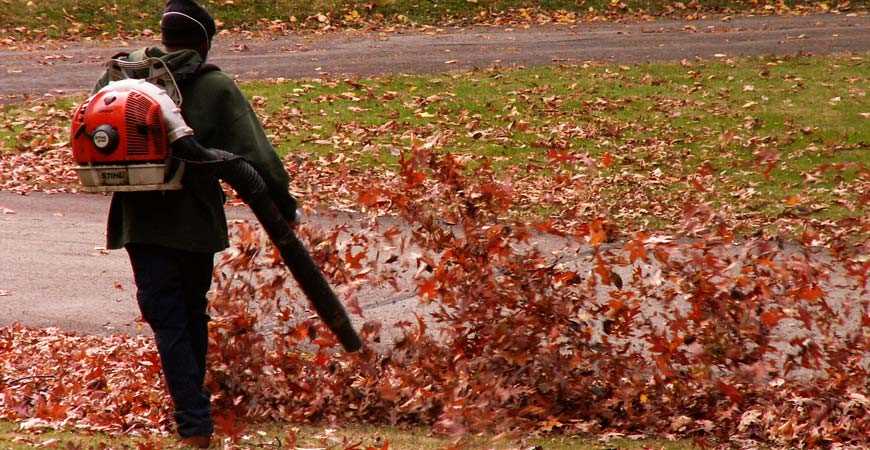
Fallen leaves can be an excellent addition to your compost pile. Composting is the process of decomposing organic materials to create nutrient-rich soil. Leaves are rich in carbon, which helps balance the nitrogen-rich materials in your compost pile. Shred the leaves before adding them to your compost pile to speed up the decomposition process.
2. Mulching
Leaves can also be used as a natural mulch in your garden beds. Mulching helps retain moisture in the soil, suppresses weed growth, and regulates soil temperature. Shredded leaves make an excellent mulch as they break down more quickly, providing nutrients to the soil.
3. Insulation
During the cold winter months, fallen leaves can act as insulation for your garden beds or overwintering plants. Layering leaves over tender plants or around the base of shrubs can help protect them from frost and extreme temperatures.
4. Wildlife Habitat
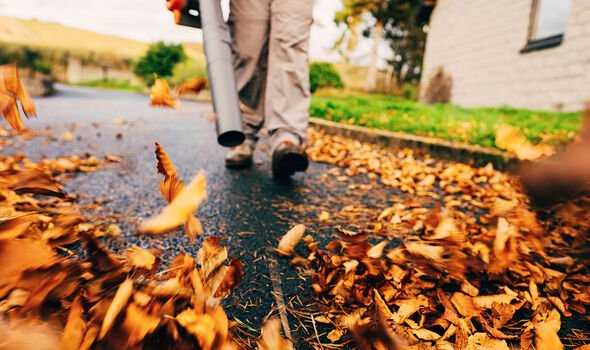
Leaves provide habitat and food for a variety of insects, birds, and other wildlife. They create a sheltered and safe environment for many beneficial creatures in your garden. Leaving some fallen leaves undisturbed can support biodiversity and attract beneficial wildlife to your yard.
5. Leaf Mold
Leaf mold is a type of compost made specifically from decomposed leaves. It is high in valuable nutrients and improves soil structure. To make leaf mold, collect fallen leaves in a separate pile or bin and allow them to decompose over several months. The resulting leaf mold can be used as a soil amendment or added to potting mixes.
Instead of viewing fallen leaves as a nuisance, consider the many ways they can be useful in your garden and yard. By composting, mulching, using them for insulation, creating a wildlife habitat, or making leaf mold, you can make the most out of this natural resource and contribute to a healthier, more sustainable environment.
Using Fallen Leaves as Mulch
Fallen leaves can be a valuable resource in your garden, and one of the best ways to use them is as mulch. Mulching with leaves can benefit your plants by providing insulation, reducing weed growth, retaining moisture, and adding organic matter to the soil.
Here are some tips on how to effectively use fallen leaves as mulch:
1. Shred the leaves:
Before using fallen leaves as mulch, it’s a good idea to shred them. Shredding the leaves helps them break down faster and prevents them from matting together. You can use a mulching mower or a leaf shredder to do this. Shredding the leaves also helps to maintain a neat and tidy appearance in your garden.
2. Apply a layer of leaves:
Once the leaves are shredded, you can apply them as a layer of mulch around your plants. Make sure to spread the leaves evenly and avoid piling them too close to the base of the plants. A layer of leaves that is about 2-3 inches thick is usually sufficient. The mulch will help insulate the soil, preventing temperature fluctuations and protecting the roots.
3. Combine leaves with other organic materials:
Fallen leaves can be even more effective as mulch when combined with other organic materials. Mixing leaves with grass clippings, straw, or compost adds nitrogen and other nutrients to the soil as the leaves decompose. This creates a balanced and nutritious environment for your plants.
4. Leave some space around the plant stem:
When applying mulch, make sure to leave some space around the stem of the plant. Direct contact between the mulch and the stem can create a damp environment that promotes rot and disease. Keeping a small gap between the mulch and the stem allows for proper airflow and prevents moisture buildup.
5. Renew the mulch annually:
Fallen leaves break down over time, so it’s important to renew the mulch annually. In the spring, you can either remove the old mulch and replace it with fresh leaves or simply add a new layer on top. This will ensure that your plants continue to receive the benefits of mulching throughout the year.
Using fallen leaves as mulch is a sustainable and cost-effective way to improve the health and productivity of your garden. By following these tips, you can make the most of this valuable resource and create a thriving garden environment.
Composting Fallen Leaves
Fallen leaves make an excellent addition to a compost pile. Composting them allows you to recycle and repurpose this natural waste, turning it into a valuable organic matter that can be used to improve the health and fertility of your garden soil.
Why Compost Fallen Leaves?
Composting fallen leaves not only helps divert waste from the landfill but also provides several benefits for your garden:
- Rich in nutrients: Fallen leaves contain a significant amount of essential nutrients like nitrogen, phosphorus, and potassium. Composting them allows these nutrients to be released slowly, providing a natural source of fertilization for your plants.
- Improved soil structure: Composted leaves help improve the structure of the soil by increasing its ability to hold moisture and nutrients. This, in turn, promotes healthier root growth and better overall plant health.
- Enhanced soil biodiversity: Composting creates an environment that encourages the growth of beneficial organisms such as earthworms and beneficial bacteria. These organisms help break down the organic matter, further enriching the soil.
- Reduced weed growth: By adding a layer of composted leaves to the surface of your garden beds, you can help suppress weed growth. The compost acts as a natural mulch, blocking sunlight and inhibiting weed germination.
How to Compost Fallen Leaves
Composting fallen leaves is a relatively simple process. Follow these steps to compost your leaves effectively:
- Rake up fallen leaves from your yard. You can also collect leaves from your neighbors or local parks if needed.
- Shred the leaves into smaller pieces. This can be done using a lawnmower or a leaf shredder. Shredding the leaves helps speed up the decomposition process.
- Add the shredded leaves to your compost pile. Layer them with other organic materials like kitchen scraps, grass clippings, or garden waste. Aim for a balance of “green” and “brown” materials to ensure proper decomposition.
- Keep the compost pile moist by watering it regularly. The ideal moisture level is similar to that of a damp sponge.
- Turn the compost pile every few weeks to provide oxygen and promote even decomposition.
- Monitor the temperature of the compost pile. It should reach around 140-160°F (60-70°C) to kill any weed seeds or pathogens.
- Wait for the leaves to fully decompose, which can take anywhere from several months to a year. You will know the compost is ready when it has turned dark, crumbly, and has a rich earthy smell.
Once your fallen leaves have fully decomposed, you can use the finished compost as a nutrient-rich soil amendment for your garden beds, potted plants, or as mulch around trees and shrubs. It’s a sustainable and eco-friendly way to make the most out of nature’s fallen bounty.
Transforming Fallen Leaves into Natural Fertilizer
Fallen leaves are a valuable resource that can be transformed into natural fertilizer. Instead of disposing of leaves in trash bags or burning them, which can contribute to pollution and waste, composting them is a sustainable and eco-friendly option. The process of composting leaves breaks down organic matter into nutrient-rich humus that can be used as a natural fertilizer or soil amendment.
Composting Methods for Fallen Leaves:
There are several methods for composting fallen leaves, depending on the available space and resources:
- Backyard Composting: This method involves creating a compost pile or using a compost bin in your backyard. Simply layer the fallen leaves with other organic matter such as grass clippings, kitchen scraps, and garden waste. Regular turning and maintaining the correct moisture level will accelerate the decomposition process.
- Leaf Mold: Leaf mold is a slow composting process that creates a nutrient-rich soil conditioner. To create leaf mold, collect fallen leaves and pile them in a designated area. Ideally, the leaves should be left undisturbed for around one to three years, allowing them to break down gradually.
- Composting Bin: Using a composting bin specifically designed for leaves can help speed up the composting process and prevent rodents or pests from accessing the organic material. These bins have aeration holes to ensure proper ventilation and can be easily turned to maintain the ideal conditions for composting.
Benefits of Using Fallen Leaf Compost:
Using fallen leaf compost as a natural fertilizer has numerous benefits for plants and the environment:
- Nutrient-Rich Soil: Fallen leaf compost adds essential nutrients to the soil, such as nitrogen, phosphorus, and potassium, which plants need for healthy growth. It improves soil structure, fertility, and moisture retention, leading to stronger and more productive plants.
- Reduces Landfill Waste: By composting fallen leaves, you are diverting organic waste from landfills, which can significantly reduce methane emissions and lessen the burden on waste management systems.
- Promotes Sustainable Gardening: Using natural fertilizers like fallen leaf compost aligns with sustainable gardening practices, reducing the reliance on chemical fertilizers that can harm the environment and disrupt the ecosystem.
- Budget-Friendly: Composting fallen leaves is a cost-effective way to enrich your garden soil. It reduces the need to purchase expensive commercial fertilizers while providing the same, if not better, results for plant growth.
- Encourages Biodiversity: Fallen leaf compost supports a healthy soil ecosystem by attracting beneficial microorganisms, worms, and insects that aid in nutrient cycling and soil aeration.
Transforming fallen leaves into natural fertilizer through composting is a simple and rewarding process. It not only helps improve the health and productivity of your garden but also contributes to a greener and more sustainable environment.
Using Fallen Leaves for Crafts and Decorations
Fallen leaves can be a great resource for creating unique crafts and decorations. They provide a natural and rustic touch to any project and can be used in various ways. Here are some ideas to inspire you:
Leaf Prints
One way to utilize fallen leaves is by making leaf prints. Simply collect a variety of leaves, choose your favorite colors of paint, and press the leaves onto paper or fabric. This technique can be used to create beautiful artwork, greeting cards, or even custom-printed fabric for pillows or tablecloths.
Leaf Garlands
Creating leaf garlands is a fun and festive way to bring the outdoors inside. Gather a bunch of leaves, punch holes in them, and string them onto twine or ribbon. Hang the garlands along walls, windows, or doorways to add a touch of autumn to your home decor.
Leaf Wreaths
A leaf wreath can make a stunning centerpiece for your front door or wall. Collect a large number of leaves, either all of one color or in a mix of hues. Attach them to a grapevine wreath or wire frame, overlapping them slightly until the entire surface is covered. Hang the wreath using a ribbon or hook, and enjoy the natural beauty it brings to your space.
Leaf Lanterns
Transform ordinary jars or glass candle holders into stunning leaf lanterns. Apply a layer of decoupage glue to the outside of the jar, then carefully arrange pressed leaves onto the glue. Once the glue has dried, add another layer of glue over the top to seal the leaves in place. Insert a candle or LED light inside the jar, and watch as the leaves create a beautiful glow.
Leaf Table Runner
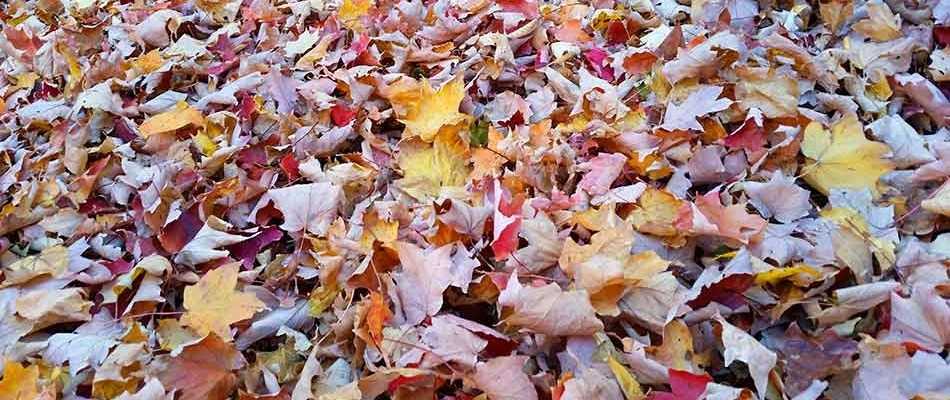
Add an autumnal touch to your dining table by creating a leaf table runner. Collect a variety of leaves and arrange them in a pattern on a long strip of burlap or fabric. Use a hot glue gun to secure the leaves in place. Lay the runner along the center of your table, and let the natural beauty of the leaves enhance your dining experience.
Leaf Coasters
Protect your surfaces in style by making leaf coasters. Gather a bunch of leaves and use clear epoxy resin to encapsulate them in small molds. Once the resin has set, you’ll have beautiful and functional coasters with an organic touch. These coasters make great gifts and can add a touch of nature to any coffee table or desk.
These are just a few ideas to get you started with using fallen leaves for crafts and decorations. Let your creativity guide you, and see how these natural materials can bring a touch of autumn to your home.
Question-answer:
Why is it important to remove fallen leaves?
It is important to remove fallen leaves because if they are left on the ground, they can block sunlight and air circulation, which can lead to the growth of mold and disease in plants.
What can happen if fallen leaves are not removed?
If fallen leaves are not removed, they can create a breeding ground for pests and insects, as well as cause damage to the grass underneath by blocking sunlight.
How often should fallen leaves be removed?
Fallen leaves should be removed regularly, especially during the fall season when leaves tend to accumulate. It is recommended to remove them at least once a week to prevent any potential issues.
Can fallen leaves be beneficial in any way?
Yes, fallen leaves can be recycled and used as mulch or compost to nourish plants and improve soil quality. They can also be used as a natural insulator for plants during the winter months.
What is the best way to remove fallen leaves?
The best way to remove fallen leaves is to use a rake or leaf blower to gather them into piles, and then dispose of them in compost bins or designated green waste bins provided by the local authorities.
Are there any alternatives to removing fallen leaves?
Instead of completely removing fallen leaves, they can be mowed into smaller pieces using a mulching mower. This will help them decompose faster and provide nutrients to the soil.







